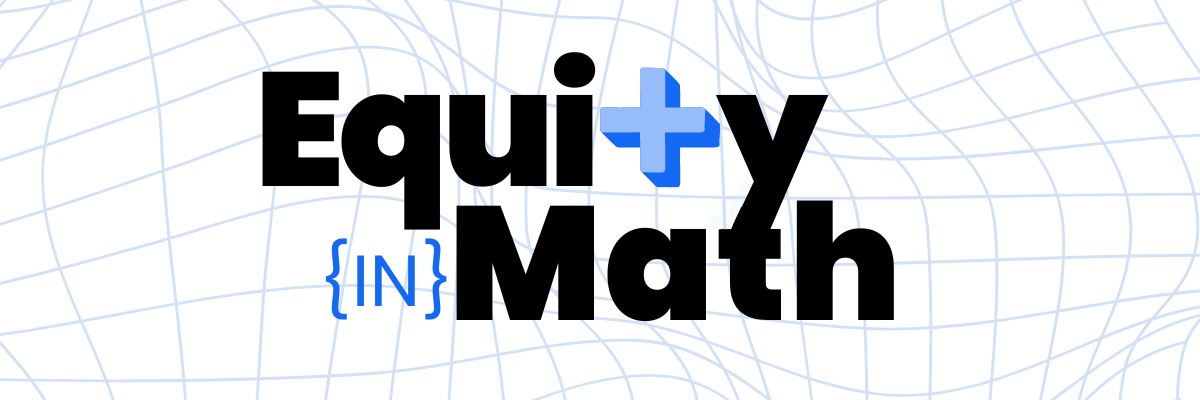|
Dear Friends and Colleagues,
When I was in 4th grade, my teacher, Mrs. Foster, whom I looked up to as a role model of the teacher I wanted to be one day, wheeled in a big box TV as she announced that we had special permission from the principal to watch the Challenger Space Shuttle launch. We watched live as the explosion filled the screen, and it felt as though time had stopped. Mrs. Foster calmly turned off the TV and went to return it to the AV room. I peeked into the hallway and saw her talking with other teachers. They hugged, and then she came back to class, gathered us together to talk about what had happened, and tried to salvage the remainder of the school day. Years later, I’d have a similar experience, learning about the attacks of 9/11 during second period and trying to decide what to tell the innocent 9th and 10th graders who were supposed to be explicating poems. How to tell them that the United States had come under attack. In that moment, I thought about the Challenger, and Mrs. Foster, and wondered how in the world she had been able to get over her own hurt and pain to shepherd us as students. As educators, we are not unfamiliar with working through a crisis. We know that some crises are visible, and some are invisible. We know that some are explosive, while others are slow burns that dismantle a sense of safety bit by bit. We know that some have villains attached, and others are just, well, science. The emergence of the novel coronavirus, or COVID-19 — which has been spreading across the world and more recently throughout the United States, with hotspots in Washington, California, and New York — has created significant disruptions for students, families, and faculties. We’ve seen great models of leadership coming from local governments and large organizations who’ve taken swift action to ensure the health and safety of communities. We know that like healthcare workers, educators also take on a heavy burden during a time of crisis. While every person and situation is unique, we believe that it’s important during these uncertain times to have a plan of action, a network of support, and a self-care strategy.
Plan of action
School systems provide so much more than just academic lessons and after school activities. In New York City, they provide 2+ meals per day, access to critical counseling, social-emotional connections, job training services, and even preventative and needs-based healthcare. An effective, efficient, and reliable school system provides caregivers the opportunity to work, which contributes to the economy and keeps the rent paid. For over 100,000 students in New York City who are experiencing housing insecurity, school is a touchstone of stability, safety, and a sense of home. This is why Chancellor Carranza, the Mayor, and the Governor have all expressed the importance of keeping schools open as long as it is safe for students and faculty members. It is important for us to recognize that other countries facing similar dilemmas have had to impose massive school closures to slow the spread of COVID-19. While we know that school districts will have well-coordinated plans for making these decisions when the time comes, schools can take additional steps to plan for the probable, and the possible. Consider the opportunities below when developing plans of action within your school.
Brainstorm and plan (for the expected and the unexpected)
Though it’s not pleasant, it is important to consider worst-case scenarios and what we’ll be able to do in these hypothetical situations. Bringing teachers and school leaders together as a community to brainstorm possible situations and develop micro-plans of action will be motivating and empowering to the faculty. When each person on the staff sees the big picture and the role they play in the details, they’re more likely to feel connected and invested in what happens next. This teamwork is essential in an uncertain and shifting situation. As part of the planning process, consider any individuals who may need special attention. Whether it’s a hyper-involved caregiver, a struggling student, or a colleague who needs some extra support, how do the needs of these few factor into the school-wide plans? Once action plans are in place, connect with the kids. While we don’t need to share all the details with students, especially our young ones, they see, hear, and understand more than we think. Taking time to check in with them and assure them that we have plans in place to keep them all safe will cultivate trust — something older students can often struggle with.
Increase and streamline communication throughout your community
Share how you intend to communicate: In an age where information is power, we can help all of our stakeholders feel safer by providing regular updates and information. Will the school be using an automated system to leave voicemails, sending a weekly or bi-weekly email newsletter, or using apps like Kinvolved or Remind? Let the community know what information you’ll be providing, how often you’ll be providing it, and where they can get it. Update your website: We don’t usually check our own websites very often, but in times of crisis, it’s the first place many community members will go to get updated information. Providing a few sentences on the front page of your website and a contact person to call will give stakeholders increased confidence and assurance that students will be well cared for in case of emergency. Identify point people: These are people who your community members can talk with on the phone or in-person. Identifying a parent coordinator, community advocate, counselor, or teacher leader as the main contact person will allow school principals the space to focus on managing the larger situation and providing updates that can be messaged clearly to the community.
Network of support
Teachers are people, too — so are principals and superintendents. While we are in the classroom or pacing the halls, educators know the jobs we have to do to keep students engaged and safe in school. At times, we might even create a little separation between our personal identity and our professional identity to get the job done. But in our core, we are all experiencing this global health crisis as human beings, and that means it comes with the full range of human emotion: fear, frustration, anger, concern, and yes, even humor! As with most crises, our experiences may fluctuate from day to day as we wrestle with the uncertainty that tomorrow brings, and consider the impact of the current epidemic on our own friends and family. Unlike 10-15 years ago, when we had to wait to get home to turn on the nightly news and learn about what happened during the day, 24-hour news cycles, Twitter, and smartphone notifications keep us plugged into major events minute by minute, which might create interruptions or distractions at a moment’s notice. The most important thing to remember is that we’re all just human beings, having human reactions to a phenomenon that’s outside of our personal control. Here are a few thoughts on how we can actively create community during these challenging times.
Reach out: make connections across your community
School leaders: take a moment to ask each faculty member how they’re doing, if they have any questions or concerns about the school’s preparedness, or if they have any concerns involving their friends or family that may be on their minds. When our teachers know they can trust their leadership to listen and care on a personal level, they will feel more connected, which will enhance their ability to be present for their colleagues and students. Teachers: take a moment to ask each of your students how they are doing, if they have any questions or concerns about the epidemic, and if they have any concerns about their friends and families. It’s important to engage with students in age appropriate conversations, but even little preschoolers can understand and may even have opinions about washing hands or keeping healthy, and they often sense when their family members are anxious. Children around the world are struggling to make sense of this outbreak, and the process can lead to sleep troubles, nightmares, or unproductive responses like OCD or anxiety. Students who feel safe sharing their thoughts, feelings, or experiences are more likely to re-engage in academic tasks once they’ve had an outlet for self-expression. Families: We can’t forget about families. As a mom with three children in NYC schools, it’s scary to send them on their way to school on a regular day, and much harder to do so in the middle of a global health crisis. Consider developing a strategy across your school to send semi-personal messages to families inviting them to share any thoughts or concerns they may have. Experiment with creating an opportunity for parents to participate in grade level video conference calls with a few teacher representatives, or sending a letter home sharing how current issues are being talked about in school. Any of these outreach methods will support the sense of community safety and security, which is what we need most.
Open up: opportunities for reflection and sharing
Let’s face it, all the outreach in the world won’t matter if we aren’t vulnerable enough to share what’s going on in our minds and hearts. Creating a network of support sometimes means being the first to share. It also means repeating ourselves. Market research tells us that consumers need to hear a message at least seven times before they are ready to take an action. If we apply this to taking action in other spaces in our lives, we can recognize that sharing honest feelings one time may not be effective enough to create a sense of safety, especially in the workplace. But there are concrete steps we can take to create a safe space. Consider the following protocols and prompts to create opportunities for connection and sharing.
Strategies for self-care
We don’t know what we don’t know, but if we look to other countries that have been grappling with the coronavirus epidemic, it is reasonable to imagine that we will see a significant disruption in education-related services throughout the spring of 2020. Knowing that we will be addressing these issues with increased sensitivity over the next few weeks, self-care is critical. Whether we’re finding comfort in conducting our own research, sharing with friends and family, or browsing cat memes, we must find ways to put our own oxygen mask first, so to speak. We won’t be any good to our students or colleagues if we aren’t able to care for ourselves.
Care for your mind
Find balance in the media you’re consuming, and be mindful of when you might be falling into unhealthy or unproductive patterns, like checking for updates every 30 minutes, or spending more time on social media than normal. Some personal reflection may help you to connect to what you need most. Do you need something light to get your mind off of the day’s drama? Do you need fact-based research to better understand what’s happening? Do you need silence or quiet to decompress from all of the incoming notifications? Care for your mind by finding a way to reset, refresh, and restart tomorrow.
Care for your body
The mind/body connection is powerful. Caring for our body through exercise, healthy eating choices, and rest is even more important in stressful situations. It isn’t easy, so consider even one small thing that you can do during this time. Whether you try going to bed 15 minutes earlier, doing 10 quick jumping jacks before breakfast, or prepping your lunch the night before — these small moves can make a big difference in your day. If nothing else, choose your favorite 20-second song segment to use while washing your hands!
Care for your heart
Caregivers, like teachers and school leaders, spend so much time thinking of other people that we sometimes forget to think about our own experience. But in times of stress, connecting with our own heart is important to reducing anxiety and maintaining a sense of security. Consider opportunities for self-reflection through self-expression, like writing in a journal, posting privately or to a small group on social media, or jotting notes on a calendar or even a sticky note. If writing isn’t your thing, look for opportunities to connect with a friend, colleague, or family member. If we want to be available for our students, we need to be sure we have an opportunity to care for ourselves.
Like the pivotal experiences of our youth, the COVID-19 epidemic will have a long-lasting impact on our world and our students. These are challenging and uncertain times.
On behalf of the CPET coaching community, we are here with you and we are here for you. Please reach out to us, in person and online, if there is anything we can do for you or your school as you’re doing everything you can to care for your students. It’s a privilege to walk alongside you in this work, Roberta Kang, Center Director & the CPET community
|
|
The Center for Professional Education of Teachers (CPET) at Teachers College, Columbia University is committed to making excellent and equitable education accessible worldwide. CPET unites theory and practice to promote transformational change. We design innovative projects, cultivate sustainable partnerships, and conduct research through direct and online services to youth and educators. Grounded in adult learning theories, our six core principles structure our customized approach and expand the capacities of educators around the world.
|
ABOUT US
525 West 120th Street, Box 182 New York, NY 10027 416 Zankel Ph: (212) 678-3161 [email protected] Our Team Career Opportunities |
RESOURCES
Professional Articles Ready-to-Use Resources Teaching Today Podcast Upcoming PD Opportunities |
COACHING SERVICES
Custom Coaching Global Learning Alliance Literacy Unbound New Teacher Network Student Press Initiative |





















